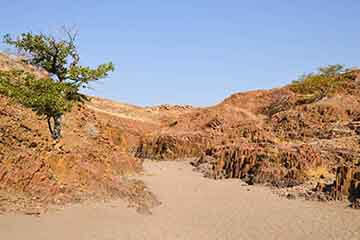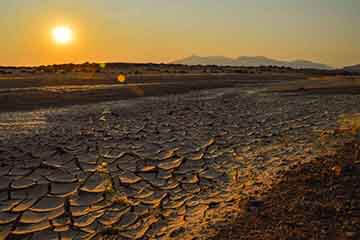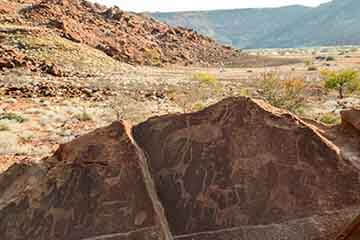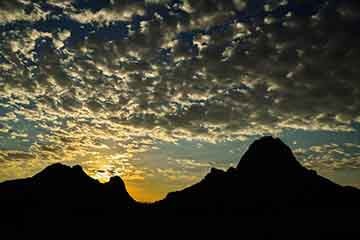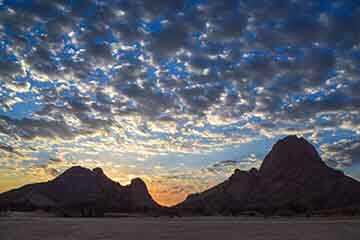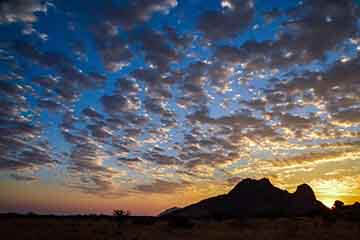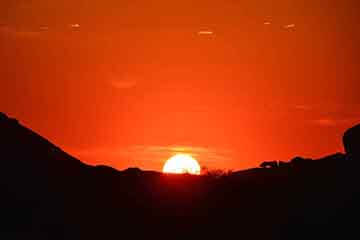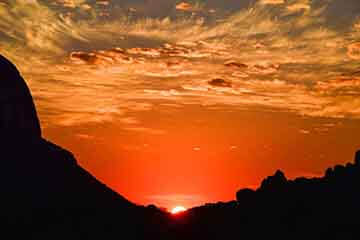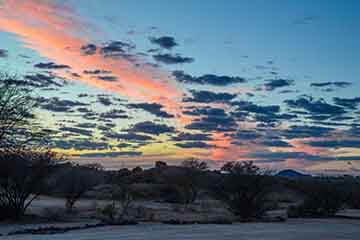Namibia
Considering a Holiday in Namibia? Here’s What You Need to Know
Namibia is a land of tranquility and breathtaking beauty. With a population of just 2.3 million people spread across 825,000 square kilometers, it is the second most sparsely populated country in the world, after Mongolia. This vast, open space offers a sense of calm and serenity that is perfect for a getaway.
Namibians love the outdoors and take pride in welcoming visitors with warm smiles and friendly conversations.
As a gesture of goodwill, it’s customary to greet everyone when entering a new area—be polite, friendly, and open to making connections. Fun fact: Namibia’s capital, Windhoek, has been recognized as Africa’s cleanest city five years in a row!
Safety and Security
Namibia is known for its stability and low crime rates. However, travelers should remain vigilant, especially in urban areas like Windhoek, where petty crimes such as pickpocketing can occur. Keeping valuables secure and being aware of your surroundings is recommended.
Weather
Namibia’s weather varies significantly depending on the season and region, offering diverse conditions for travelers to consider:
- Summer (October to April): Expect high temperatures, particularly in the deserts and Etosha, where the heat can be intense. The rainy season typically spans February to May, bringing occasional downpours that offer a refreshing relief from the heat.
- Winter (May to September): Daytime temperatures are pleasant, averaging in the low 20s°C, but nights can be extremely cold, especially in desert regions. It’s essential to pack warm clothing if you’re visiting during this time. Winter skies are usually clear, and Keetmanshoop, a town in southern Namibia, ranks among the world’s sunniest places, with an average of 3,870 annual sunshine hours. Located on the edge of the Namib Desert, Keetmanshoop boasts an arid climate with minimal rainfall and endless sunny days.
Geography of Namibia
Namibia’s diverse landscapes are shaped by its unique geography, featuring everything from expansive deserts to lush river regions.
- Rivers and Borders: Namibia is bordered by five perennial rivers, which flow year-round. These include:
- The Zambezi and Chobe Rivers in the northeast
- The Kavango River, which feeds into the Okavango Delta
- The Kunene River in the northwest
- The Orange River in the south, marking the border with South Africa
- Deserts:
- The Namib Desert, a cool coastal desert, stretches along the entire western coastline and extends inland for about 200 km, blending into Namibia’s high-lying central plateau.
- The Kalahari Desert in the east offers a contrast with its red sands and semi-arid savannas.
- Zambezi Region: In the far northeast lies the lush Zambezi Region (formerly known as the Caprivi Strip), bordered by Angola, Zambia, Botswana, and Zimbabwe. This area is a wildlife and birding paradise, with rich ecosystems and excellent game-viewing opportunities. For anglers, the tiger fish found here are legendary—especially during the low water season when prize-winning catches are made.
Namibia’s stunning landscapes, warm hospitality, and outdoor lifestyle make it a dream destination for adventurers, nature lovers, and those seeking a serene escape. Explore it all—from the iconic dunes of Sossusvlei to the lush waterways of the Zambezi Region—and create memories that will last a lifetime.
Weather
Namibia’s weather varies significantly depending on the season and region, offering diverse conditions for travelers to consider:
- Summer (October to April): Expect high temperatures, particularly in the deserts and Etosha, where the heat can be intense. The rainy season typically spans February to May, bringing occasional downpours that offer a refreshing relief from the heat.
- Winter (May to September): Daytime temperatures are pleasant, averaging in the low 20s°C, but nights can be extremely cold, especially in desert regions. It’s essential to pack warm clothing if you’re visiting during this time. Winter skies are usually clear, and Keetmanshoop, a town in southern Namibia, ranks among the world’s sunniest places, with an average of 3,870 annual sunshine hours. Located on the edge of the Namib Desert, Keetmanshoop boasts an arid climate with minimal rainfall and endless sunny days.
Climate and Packing Tips
- Layered Clothing: Namibia’s climate can swing dramatically, with hot days and cold nights, especially in desert regions. Pack lightweight clothing for daytime and warm layers for evenings.
- Sun Protection: With high levels of sunshine, sunscreen, sunglasses, and a wide-brimmed hat are essential.
Water
Namibia’s municipal water is generally safe to drink, but outside of Windhoek, most water comes from boreholes. Bottled water is widely available, and we recommend carrying enough water when traveling, especially if venturing into the desert. Dehydration can occur quickly in Namibia’s dry climate, so always stay prepared.
Electricity
Namibia uses a 220-volt power supply, and sockets require Type D and Type M adapters (commonly used in South Africa). Ensure you pack:
- Appropriate adapters for your devices.
- A solar charger if you’ll be away from power sources for extended periods.
- Extra batteries or power banks to keep your devices charged.
Many lodges and camps rely on solar and generators, but power availability isn’t always guaranteed, especially in remote areas.
Roads and Transport
Namibia’s road system offers a mix of tarred and sand surfaces, making navigation an adventure in itself:
- Tarred Roads: Only about 20% of Namibia’s roads are tarred, primarily connecting major towns and cities.
- Sand and Gravel Roads: The remaining roads are gravel or sand, which can vary in condition depending on weather and usage. Rain can create slippery surfaces and potholes, so caution is essential. Always drive below 80 km/hour on gravel roads to maintain control.
Driving in Namibia:
- Namibia is a right-hand drive country, following the same driving style as South Africa and other southern African nations. If you’re not used to driving on the left side of the road, take extra care at intersections and while overtaking.
Wildlife and Pedestrians:
- Be vigilant for wildlife such as warthogs, kudu, antelope, and elephants, which can unexpectedly cross roads, particularly near national parks or reserves.
- In towns, pedestrians often cross roads without warning, so drive cautiously.
Public Transport Options:
- Taxis and Shuttle Buses: Affordable options, though they can be crowded.
- Long-Distance Buses: Routes connect Windhoek with Gaborone, Victoria Falls, Cape Town, and Johannesburg.
Airport Transfers:
The Hosea Kutako International Airport, located 45 km from Windhoek, does not offer public transport. Visitors will need to arrange shuttles online or through their accommodation. Reputable shuttle services also operate between Windhoek and Swakopmund/Walvis Bay, providing safe, air-conditioned travel.
We can assist with bookings for shuttles and other transportation to ensure a smooth journey. Contact us for personalized travel arrangements.
Emergency Contacts and Safety
Roadside Assistance: Namibia’s vast distances mean help isn’t always close. Consider renting a car with a satellite phone or a company that offers 24/7 roadside assistance.
Emergency Numbers: Note down emergency contacts, including the police (10111) and ambulance services (211111).
Visa Requirements and Entry
Visas: Many nationalities can enter Namibia visa-free for stays up to 90 days (until 30. April 2025). Others may require a visa, so travelers should check requirements before arrival.
Yellow Fever Vaccination: Not required unless arriving from a country with risk of yellow fever.
Petrol Stations
Petrol stations are available in all major towns and cities, making it easy to refuel during the first leg of your journey. However, once you venture into remote areas like the Namib Desert, options become limited. Key locations such as Solitaire and Sesriem offer refueling points, but it’s always a good idea to top up whenever possible. Note that diesel is generally more widely available than petrol, so plan accordingly.
National Parks, Private Game Reserves and Permits
Park Entry Fees: Most parks, including Etosha and Namib-Naukluft, require daily entrance fees. Carry cash or check if cards are accepted.
Private Game Reserves: Namibia’s private game reserves offer exclusive experiences, often with fewer crowds and luxurious accommodations. Notable reserves include:
- Ongava (near Etosha),Onkonjima, NamibRand, and Mount Etjo are among the most popular, providing guided safaris, night drives, and unique wildlife encounters.
Most private reserves charge a conservation fee, which supports the upkeep of the reserve and wildlife protection efforts.
Self-Drive Permits: Some areas, like Skeleton Coast Park, Palmwag Concession, Namib Naukluft, Welwitschia Drive etc., may require special permits for self-drivers.
Wildlife and National Park Etiquette
Respect Wildlife: Keep a safe distance from animals, especially elephants, lions, and rhinos. Never attempt to feed or approach them.
Drive Safely: Stick to park speed limits and avoid driving at night to reduce the risk of wildlife collisions.
Photography Tips
Namibia’s landscapes are incredibly photogenic. Bring a camera with a zoom lens for wildlife photography and extra memory cards. Early morning and late afternoon provide the best lighting.
Currency
Namibia uses the Namibian Dollar (N$), which is pegged at an equal value to the South African Rand (ZAR). Both currencies are accepted throughout the country.
If you need to exchange foreign currency, it’s best to do so upon arrival at the airport, or in major cities like Windhoek or Swakopmund.
Smaller towns may charge higher commission fees, or have limited currency exchange facilities.
Cash vs. Card Payments
While credit and debit cards are widely accepted in cities, cash is king in rural areas and smaller businesses. ATMs are available in most towns and petrol stations.
Tips & Taxes
Tipping is customary in Namibia and is a great way to show appreciation for good service. Here’s a guide:
- Restaurants: A 10% tip is standard for waitstaff.
- Petrol Attendants and Porters: A tip of N$5 to N$10 per bag or service is appreciated.
- Guides: Gratuities vary depending on the tour, but tipping your guide is common for exceptional service.
Namibia has a 15% VAT (Value Added Tax) on most goods and services. While accommodation and services are not eligible for VAT refunds, you can claim VAT back on goods purchased during your visit when departing the country. You’ll need to present receipts and, in some cases, the goods themselves.
Language
Namibia’s official language is English, making it easy for most visitors to communicate. However, the country’s rich cultural diversity means you’ll hear a variety of languages spoken, including:
- Oshiwambo, Afrikaans, Nama, Damara, Otjiherero, and German.
Namibia is home to many ethnic groups, including the Owambo, Herero, Nama, Damara, Afrikaners, and Germans, each contributing to the country’s vibrant cultural mosaic.
Cultural Etiquette
Namibia is a culturally diverse nation with various ethnic groups, each with unique traditions and customs. Engaging respectfully with local communities enhances your travel experience. Learning a few phrases in local languages or understanding cultural norms can be beneficial.
Local Cuisine and Food Safety
Try local dishes like game meat, kapana (grilled beef strips), or oshifima (porridge) for an authentic taste of Namibia.
In remote areas, stick to bottled or boiled water and eat freshly prepared food to avoid stomach issues.




























